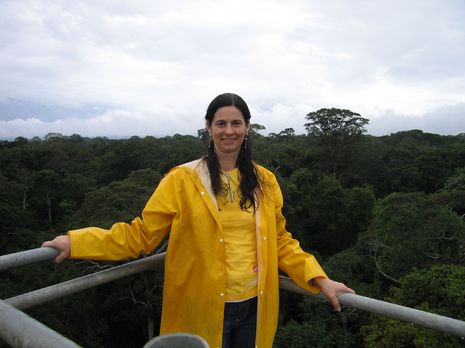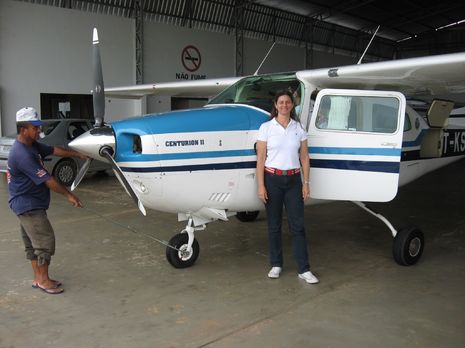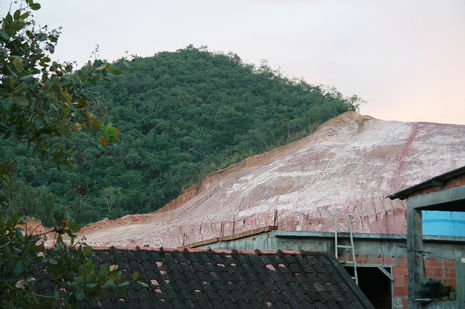“For scientists, today is a nightmare”: Luciana Gatti on the Amazon’s carbon emissions
The Brazilian scientist who discovered, with her team, that the Amazon no longer was a carbon sink, discusses her research with Interviews Editor Juliette Guéron-Gabrielle

“It was hard to share this news to the world”, Luciana Gatti says of the 2017 conference in Switzerland where she announced her team’s findings: the Amazon no longer was a carbon sink. Deforestation in the Eastern Amazon, fires, a longer dry season and reduced precipitation meant the Amazon’s carbon balance was positive instead of the expected negative.
Luciana and her team used, over several years, a method of carbon profiling. In 2004, when their project started, they only measured the concentration of carbon in the air masses in the Northeast Amazon. Then, in 2008, they extended their project to four different locations, which meant they could carbon profile 80% of the Amazon.
Her team found strong regional differences: “The East-Northern part of the Amazon was the biggest carbon source. The West-Northern part neutral. The South-West was a small source but considering the uncertainty we can call it neutral. The South-East was also strong source.”
Tracking regional differences is important because carbon emissions are not proportional to the percentage of deforestation of the area. Rather, their increase is exponential. “The South- East of the Amazon is 30% deforested. The Western part is around 11% deforested. But the South-East region emits ten times more carbon than the Western one. Not three times more.”
“It is not proportional, because we have a kind of loop”, Gatti explains. “Deforestation sends CO2 to the atmosphere, but also reduces precipitations and increases temperatures. So the following dry season is longer. More stressful. And that bit of the forest will die or burn”, Luciana Gatti states.
Gatti explains deforestation plays a key role in understanding why the Amazon became a carbon source. “Deforestations has many ways of producing carbon indirectly. People don’t include those indirect carbon emissions in their findings.” This explains why Gatti’s research went against the consensus of the 2010s, that considered the Amazon a carbon sink.

“The actual deforestations accounts for one third of the carbon emissions. Another third is the fires, since people set fire to the areas they deforested to turn them into arable land. Then, the last third is the longer dry season deforestation creates: the carbon released by the trees during the increased dry season is not compensated by their capacity to sink carbon during the wet season. This is the measure that is not included in the usual accounts of the carbon flux of the Amazon.”

Grief beyond borders: Afghan diaspora and the crisis in Afghanistan
Gatti says the Amazon would return to being a carbon sink if deforestation and fires were stopped. “The emissions in the East are so high that they cancel out the sinking capacities of the other parts. But if we stop the fires, the Amazon will be a carbon sink again. Today the emissions from fire are three times higher than the amount of carbon the Amazon sinks.”
Gatti explains the rate of deforestation had stalled, before the Bolsonaro presidency. “Stopping the fires needs to be a political project. We had, in the past, a very successful anti-deforestation plan. From 2004 to 2012 the reduction in deforestation was 84%. There was a strong governmental will. They created a law that allowed the fiscal officers to destroy the tractors used for deforestation. Now our government made this destruction illegal. And they stopped applying penalties.”
Our interview took place over Zoom. When Luciana Gatti explained to me how they built their laboratory, with the help of the American agency NOAA, her tone was joyous. She explained she learned how to do the repairs herself, because nobody knew how to maintain such a laboratory. In detailing to me, a slightly hungover twenty year old joining the call sat on my bed in an Airbnb for lack of a better seating, the intricacies of carbon cycles and why traditional carbon profiling of the Amazon often underestimate the chain effects of deforestation, she was incredibly patient and enthusiatic. But, when speaking about the future, her enthusiasm curbed. She says she finds it hard to think about the years to come.

“Today we are changing the world in many ways, by changing the composition of nature or the temperature gradients. Of course, this is not sustainable.”
She found an expression to characterise humanity’s recent history. “I started saying that humans are making a ‘half progress’. We look at how much more comfortable life is today, and ignore the destruction left on the way. Another one of my collegue calls our current agroindustrial system ‘agrosuicide’“.
She talks to me about Jeff Bezos’s trip to space, about his will to escape the human condition instead of attempting to save it for future generations. “I look at these very rich people. They want to go to space, watch earth from high up for ten minutes, an hour. It is unbelievable. Why are they not saving the amazon? They are putting money in the trash. We need to change many things. How can we think we have the right to destroy animal species for money, to set fire to the forest? And people that kill animals for sports… How much have we evolved since the epoch of the colosseum, when killing was seen as fun?”
She ends the call by saying, as a Brazilian woman, and a scientist, “it is hard to watch the destruction”. “I love what I do, I love the Amazon, but it is hard to watch”, she repeats. It is hard to disagree.
 News / Clare Hall spent over £500k opposing busway 24 December 2025
News / Clare Hall spent over £500k opposing busway 24 December 2025 Comment / The ‘class’ of Cambridge24 December 2025
Comment / The ‘class’ of Cambridge24 December 2025 News / Caius mourns its tree-mendous loss23 December 2025
News / Caius mourns its tree-mendous loss23 December 2025 News / Girton JCR publishes open letter expressing solidarity with Palestine25 December 2025
News / Girton JCR publishes open letter expressing solidarity with Palestine25 December 2025 Comment / Yes, I’m brown – but I have more important things to say22 December 2025
Comment / Yes, I’m brown – but I have more important things to say22 December 2025









